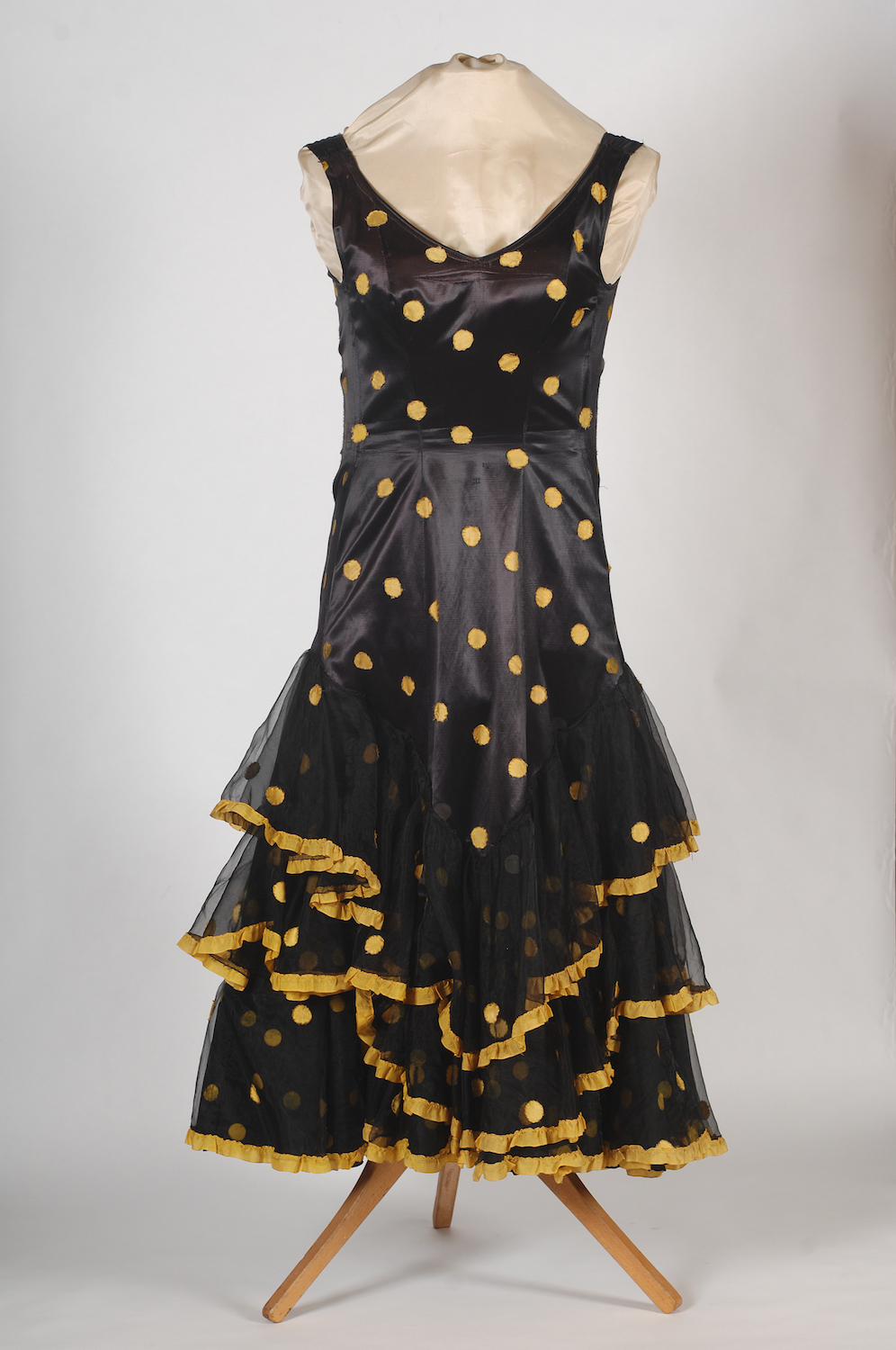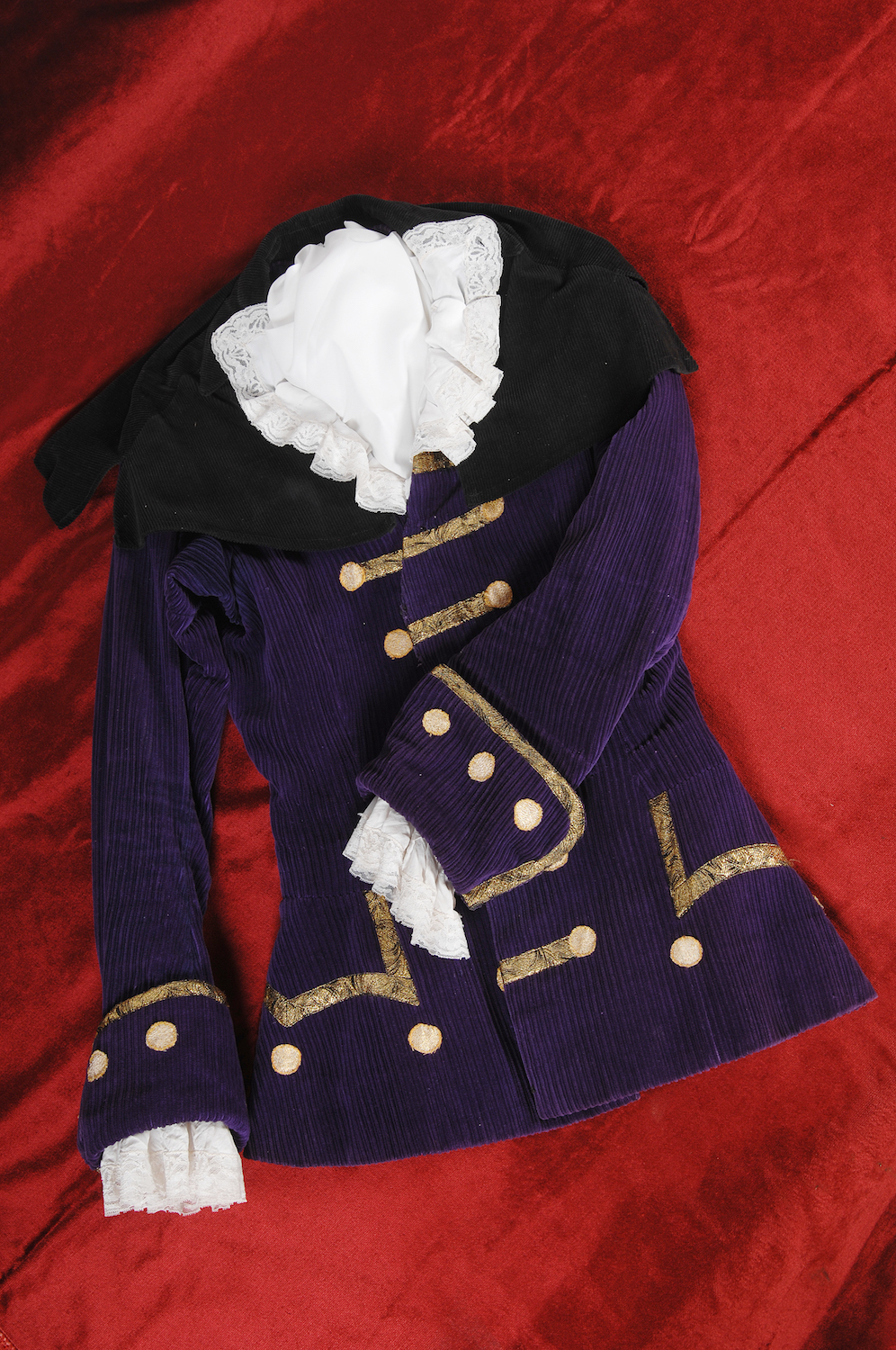
A magyar balettművészet aranykorának nevezik azt a nagyjából három évtizedet, melynek legismertebb művészei közé tartozott a tárlóban látható jelmezek két tulajdonosa. Lakatos és Róna nem csupán az ország határain belül számított rajongott csillagnak, akiknek vonásait újságcímlapok, plakátok, képeslapok százai örökítették meg, de mindketten jelentős nemzetközi hírnévnek örvendtek. A jelmezeket gyűjteményünknek ajándékozó Magyar Állami Operaház szólistáiként a világ legjelentősebb táncszínpadain és fesztiváljain mutatkozhattak be. A szenvedélyes, virtuóz forgástechnikával rendelkező Lakatos, és az „örök herceg”, az elegáns, délceg Róna izgalmas pályájában számos az egyező pont: például mindketten sikerrel próbálták ki magukat színészként, filmszínészként is.
Costume of Gabriella Lakatos (1927–1989) from Bolero and of Viktor Róna (1936–1994) from the ballet Sleeping Beauty (velvet, silk and tulle)
We call the golden age of Hungarian ballet the nearly three decades when the two above-mentioned dancers were active. Lakatos and Róna were true super stars not only in the country, but they both enjoyed an international acclaim, being featured on magazine covers, posters and postcards. As the solo dancers of the Hungarian Opera, who also donated these costumes to our museum, they performed on the most important dance stages and festivals of the world. The passionate Lakatos, who had an impeccable technique, and the ‘eternal prince’, the elegant and slender Róna shared many similarities in their careers: for instance both tested themselves with success as stage and film actor too.
[column one-half]
[column one-half]


